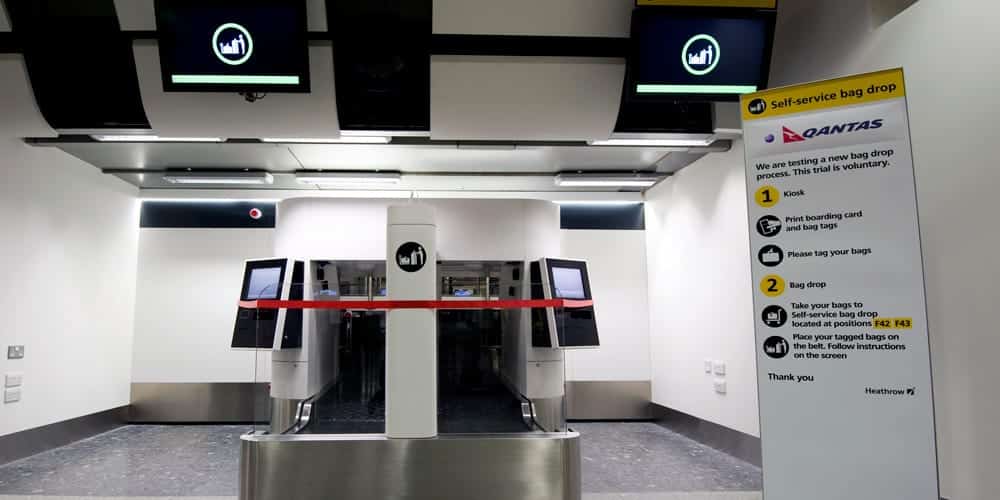
Check-In halls are becoming increasingly automated. Do you know your way around automated bag drop systems, and the advantages and disadvantages to each? These new technologies have a lot to offer airports but can also affect other areas throughout the terminal. As with any innovation, you need to look at the impact holistically. Take a look at our two-part guide to automated bag drop.
What’s the difference between one-step and two-step bag drop?
One step is very much as its name suggests – the passenger can check-in for the flight and drop off their bags in one, hopefully easy, step. This is just like a regular manned check-in but without any person required from the airline, including taking payment for any excess baggage. Although customer service floor staff should always be considered necessary to ‘floor sweep’ –providing support to passengers having difficulty with the automated process.
With two-step bag drops, the passenger checks in at a Customer User Self Service machine (CUSS) as before but goes to a separate station to input their baggage to the baggage handling system. There are more CUSS machines for passenger input than areas for baggage input, which are manned.
How do one-step and two-step bag drops compare?
Although there are variations on the two technologies, one step bag drop systems usually mean a number of passengers checking in are supervised by a single customer services assistant through the whole process of check-in, boarding card printing, bag tag printing / attaching to the bag and ‘dispatching’ the bag on a conveyor into the airport baggage system, these activities all happen at one kiosk.
Advantages of the one-step bag drop is that it takes away the complications of check-in desk opening and closing times, it can be open all of the time. As there are no peaks and troughs in activity that typically coincide with check-in desk opening times, this means less queuing at the CUSS machines and a reduced queue landside, therefore reducing the security risk. Cost efficiencies also apply with the reduction of check-in staff.
With one step, the processing is usually slower than conventional manned Check-In. This is surprising but is due to adoption problems with passengers getting used to using the machines and technology for the first time, and have various queries that will need solving by airline staff.
The two-step bag drop doesn’t have to be integrated into the baggage system, which means it is cheaper and easier to implement than one-step.
A two-step has a quicker process time by separating the check-in and baggage input elements. The first step in the two-step process is dominant.
The disadvantage to the two-step process is that it does not feel like a good passenger experience, as it can seem cluttered and untidy.
Generally, as a result of the added input to the baggage handling system and the processing speed, one-step is generally more expensive and ties up system resources than two-step, the quicker and cheaper alternative.
Read part two for more insight on how both one-step and two-step bag drops affect airports holistically, and how AiQ have analysed the systems in Leeds Bradford and Manchester Airports.
Image Source: Heathrow Airport Image Library 2017

